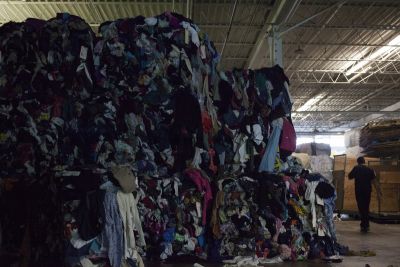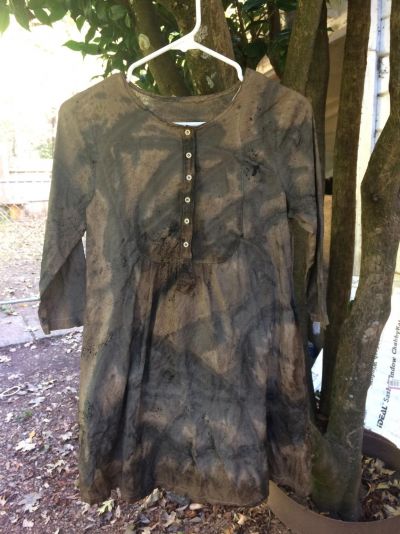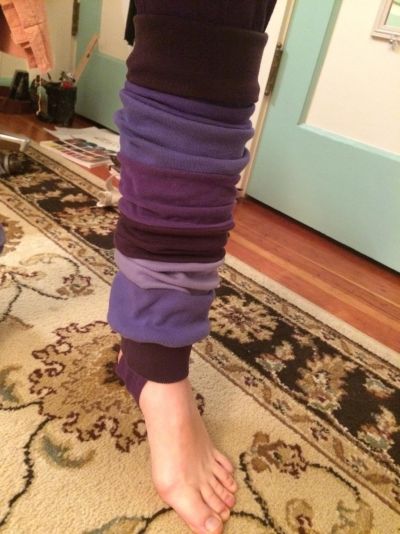Zero-Waste Attire

Have you heard of "fast fasion"? Merriam-Webster defines it as "an approach to the design, creation, and marketing of clothing fashions that emphasizes making fashion trends quickly and cheaply available to consumers." It is a plague. It is extravagance, excess, and waste at its worst. Compounding the problem, many of these garments are built with synthetic fabrics. Whether it's in your washer and dryer now or in a distant landfill later, these fabrics all break down into microplastics to be ingested by marine wildlife and inhaled by humans and other land animals. (Consider your lint trap--"lint" is actually just tiny pieces broken off of your fabrics, be they natural or synthetic.) Additionally, anyone who has ever stopped to consider the sheer volume of things already cramming shelves in every antique and thrift store can easily see how much stuff is already in the world. Do we really need more?? No, not really. We could easily live on much, much less, and in fact did for hundreds of years before the industrial and technological revolutions catapuled our production rates into their now-frenzied and truly insane pace.
Consume less. That is the trick. Swap clothes with friends and family, or find local clothing swaps with other people. Grants Pass's Women's Crisis Support Center hosts a clothing fair every April and October, and you can find a lot of gently used clothing there for very low prices. Only take as much as you actually need. If you happen to come home with something you later decide you don't want, dedicate a little time offering it to your circle of people to see if it might find a better home.

Or consider whether you can alter a garment to be more to your taste! For instance, any natural-fiber (cotton, silk, wool, hemp, rayon, linen, etc.) white or off-white fabric can be dyed to achieve a new color. In books and online, there is a host of information on natural dyeing methods that use materials such as onion skins, turmeric, and other plant material. The shirt pictured here was originally a plain white cotton. When dyed with a bath made from black walnut hulls, it became a beautiful, new creation. The really adventurous can even try dyeing old pastel clothes to get a new color.
When you must purchase, see if there are options to reuse what already exists by shopping at thrift and antique stores! Vintage clothes can find new life in your wardrobe, and they add a special flare for anyone wanting to achieve a particular look. Be sure to select options made from natural fibers so as not to perpatuate the contaminating waste of polyester and other synthetic fibers.

When you visit thrift shops, consider whether you might be interested in learning how to alter used clothing to better suit your body and style. Too-long pants and skirts can be hemmed up or cut off for a shorter look. Shirts or sweaters missing a button can be revamped with a new set; holes can be covered up with interesting patches. You can even manufacture your own easy patches with fabric scraps and a bit of Wonder Under. Cotton jersey (aka, tshirt fabric) is very easy to cut and restyle and does not fray, so it's an excellent fabric for beginners to learn on. These legwarmers were made with a serger from a number of used tshirts, all purchased for low prices. Check out the list on this page to find a large number of ways to upcycle clothing; there are options for everybody who wants to learn. And for those who are curious but don't own a sewing machine, check out Josphine Community's Library of Things! You can rent a sewing maching there to practice on if you're unsure about diving in all the way. For guidance, check out sewing classes at Joann's.
If you must purchase new objects, it is vital to settle only for things that will actually last, thereby decreasing your waste output. Lasting garments often cost more, but $20 vinyl "winter boots" will likely not last even their first season. Synthetic leather cracks in the cold, and it's not as warm as real leather anyway, so why bother? That cheap pair of boots or shoes will quickly and sadly end up in the landfill. Then you'll have to use more gas and spend more money to purchase yet another new pair! This follows the same process as our food intake: each cheap (and low quality) now; pay more in medical bills down the road. Clothe yourself cheaply now; pay for it with an ever-sickening earth.